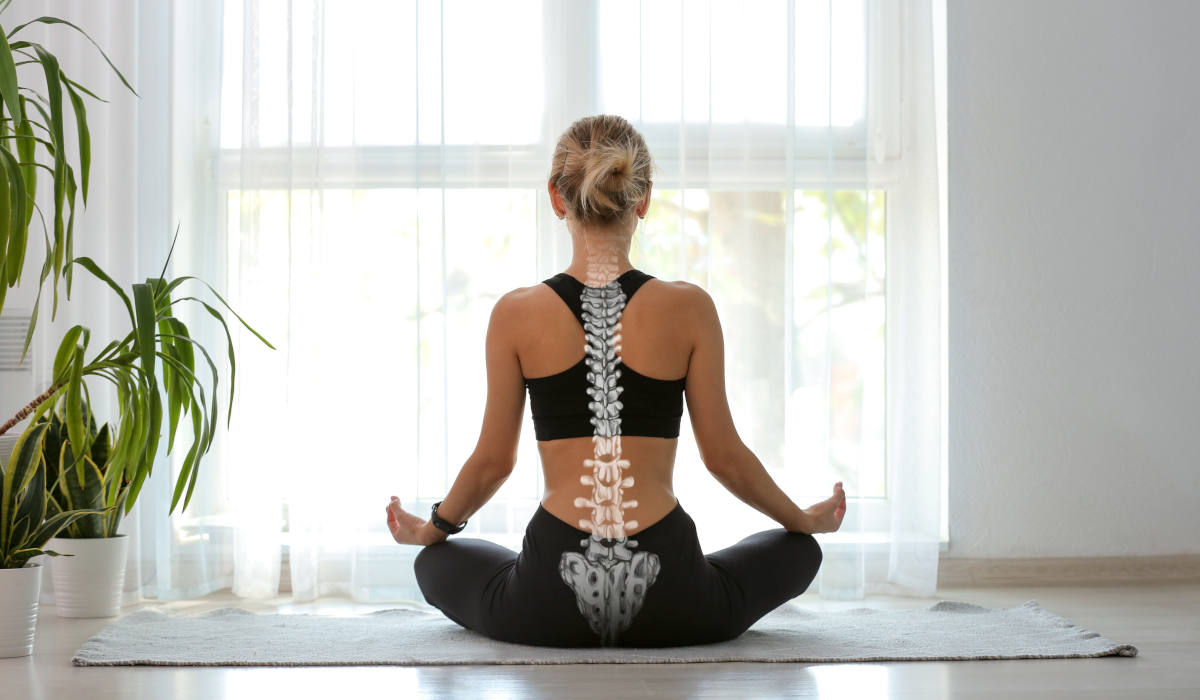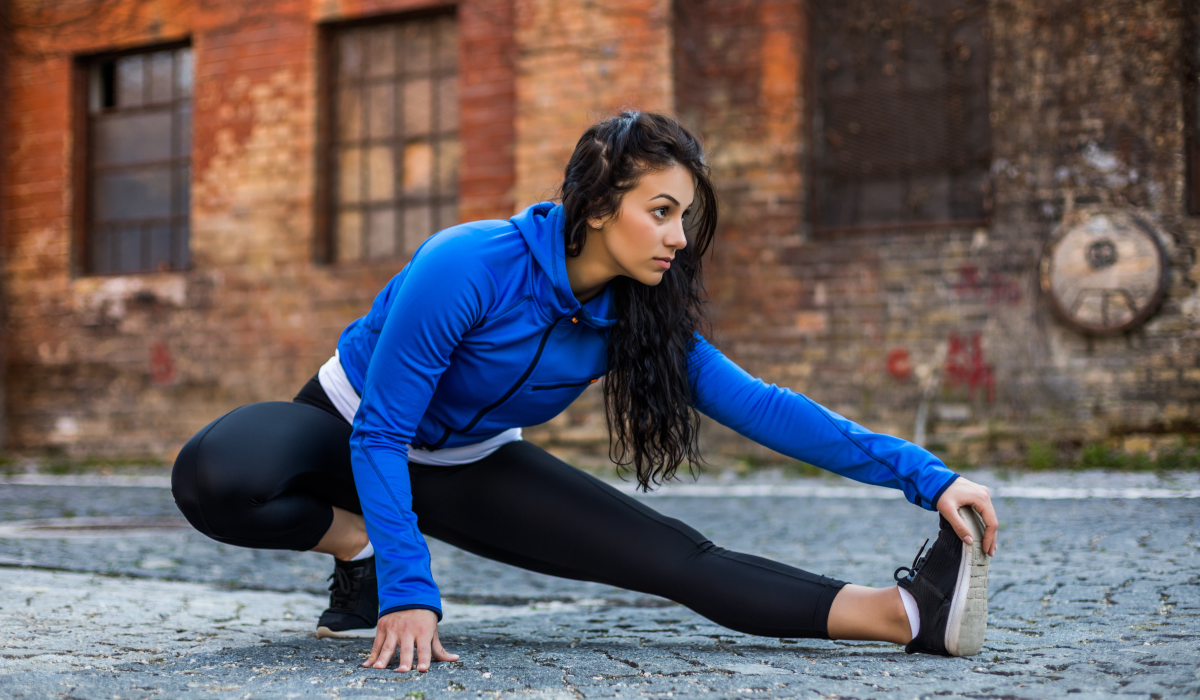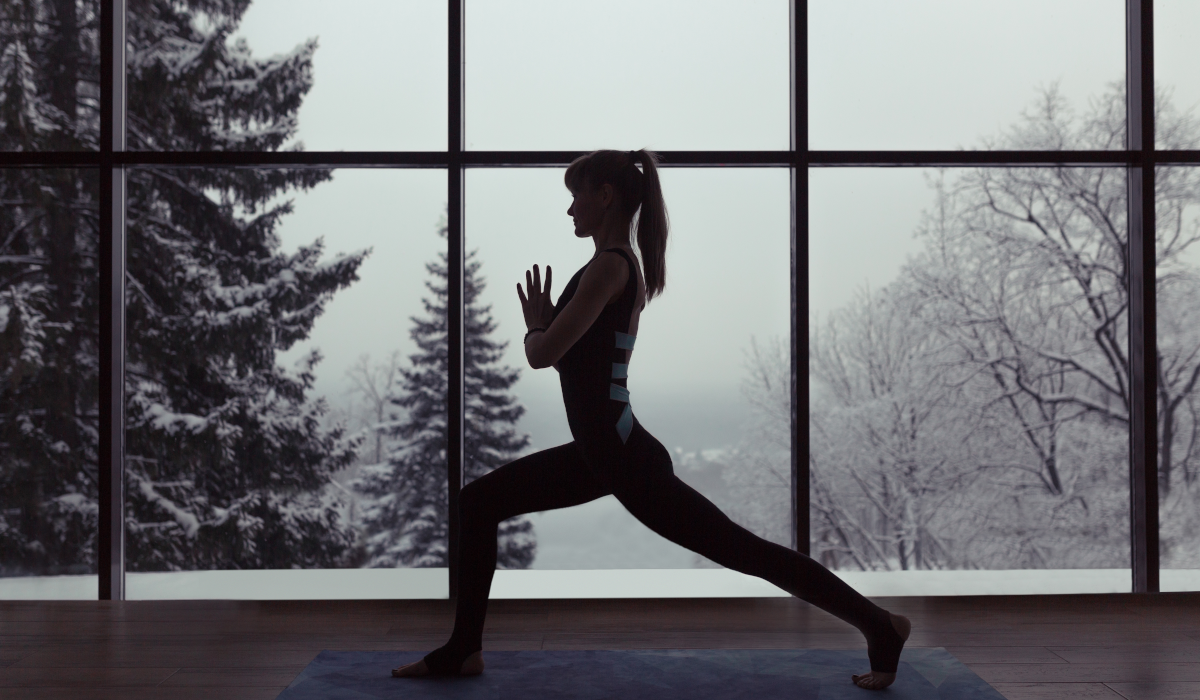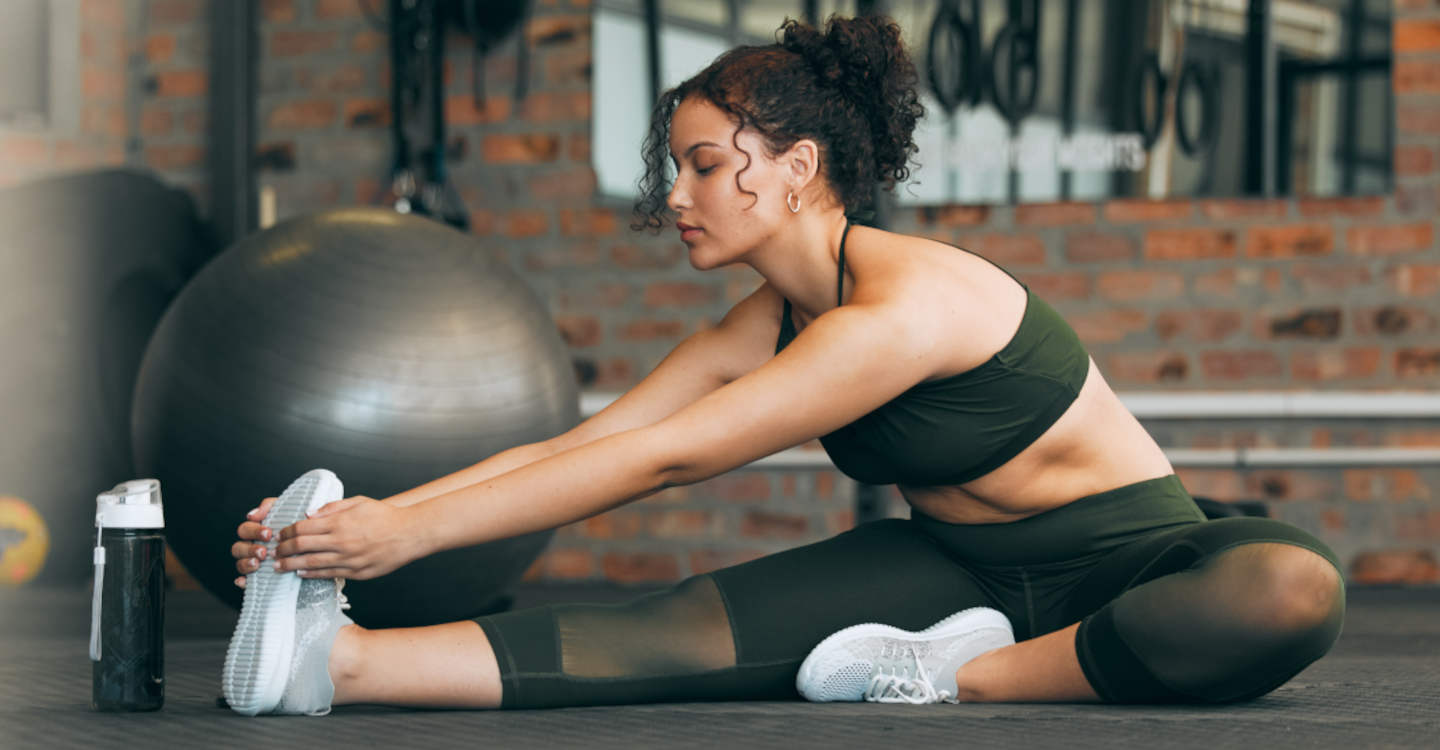Things you’ll learn… |
Are you suffering from the effects of bad posture? You’re in the right place.
Slouching is just the tip of the iceberg when it comes to the impact that poor posture can have on our bodies. And if you're experiencing discomfort or have your own mobility and posture concerns, we’re here to help.
Did you know? Focusing on good mobility and maintaining proper posture not only helps your overall well-being but also plays a crucial role in achieving a pain-free body and preventing injuries.
Whether you're an athlete striving for peak performance or simply aiming to move effortlessly in your daily activities, a targeted mobility training and exercise program can make a real big difference.
Here, you’re going to discover effective and natural approaches to unlock better mobility and posture.
Keep reading to learn a range of mobility and flexibility exercises that can improve muscle strength, balance, joint health, body weight, and more— starting today.
Ready? Let’s go. Because positive change can start right now.

Why is posture important?
As any physical therapist or personal trainer will tell you, maintaining good posture is massively important for your health and well-being.
But do you know why?
Let’s take a look at the many ways why posture is important now. And it’s an eye-opening read.
Musculoskeletal health
Proper posture plays a vital role in musculoskeletal health by helping balanced muscle use and joint alignment.
When we maintain good posture, we distribute the body's weight evenly and minimize excessive strain on certain muscles and joints.
This helps to reduce the risk of musculoskeletal disorders such as back pain, neck pain, and joint problems.
It’s also true that good posture supports the natural curves of the spine, which act as shock absorbers and ensure optimal spine alignment.
Good posture allows the muscles and ligaments to work efficiently, providing stability and flexibility to the skeletal system.
Example…
When you walk with good posture—shoulders back, head held high, and spine aligned—your body weight is distributed evenly across your musculoskeletal system.
The result? It minimizes the strain on specific muscles and joints, reducing the risk of pains and problems that can arise from uneven weight distribution or poor alignment.
Breathing
It’s not a well-known fact, but posture also has a really big impact on our breathing (yes, you heard that right).
When we have good posture, the muscles surrounding the diaphragm and ribcage can fully expand and contract, allowing for efficient lung function.
On the other hand, poor posture can actually restrict our ability to take deep breaths.
This means we can’t take in as much oxygen, and we may breathe shallowly as a result.
When the spine and ribcage are correctly aligned, the lungs are able to fully inflate and deflate.
Being able to breathe fully means more oxygen being transported to the body’s tissues and organs so they can work at optimum levels.
Organ function
Maintaining good posture is essential for good organ function.
When we slouch or hunch, our internal organs can become compressed, and they don’t work at their full capacity.
Good posture allows the organs, like the lungs, heart, and digestive system, to have sufficient space to function properly.
When the spine and pelvis are in alignment, this good posture helps with the alignment and tension in the ligaments and muscles supporting the organs.
The result is better organ function, smoother digestion and good blood circulation.
Bone health
Poor posture can have adverse effects on bone health, particularly the spine and hips.
It can lead to decreased bone density in these areas, increasing the risk of osteoporosis and fractures.
It’s also true that poor posture can make way for the development of spinal deformities like kyphosis or scoliosis.
Joint health
Posture plays a key role in joint health too—especially in weight-bearing joints like the knees, hips, and ankles.
Poor posture can lead to improper joint alignment, increased stress on the joints, and accelerated wear and tear of the cartilage. Over time, this might lead to joint pain and arthritis.
When we maintain good posture, our body weight is distributed evenly across the joints. As a result, you can reduce the risk of joint injuries and joint degeneration.
Appearance
While we put in a lot of other efforts about our appearance, our posture is often overlooked.
But why? It has a big impact on how we look at ourselves (and others) and how we feel.
Think about when you look in the mirror. Posture influences your body alignment and muscle tone.
When we stand with good posture, our natural curves and proportions are accentuated, making us appear leaner, taller, and more confident.
Holding proper posture can also help in preventing the development of a hunched back or other postural deformities that can affect how we look at ourselves and others.
When we stand with poor posture, such as hunching or slouching, we appear wider, shorter and, in turn, less confident.
It can even contribute to the development of conditions like a hunched back or "dowager's hump," which can significantly impact our appearance in extreme circumstances.
Read: Self-love & weight loss: how to love your body and still lose weight

Hips
This is a big one!
Posture is important for so many reasons, but no more so than the hips.
Hip mobility and posture are closely linked as the flexibility and range of motion in the hips directly affect our ability to maintain good posture.
It’s particularly important to read about if you work at a desk all day or have a sedentary lifestyle.
Let’s explore how hip mobility impacts posture.
Hip flexors and posture
The hip flexor muscles, including the iliopsoas, rectus femoris, and tensor fasciae latae, play a significant role in hip mobility and posture.
These muscles connect the spine and pelvis to the legs and are responsible for flexing the hip joint.
When the hip flexors become tight and shortened, which is a common issue due to prolonged sitting or sedentary lifestyles, they can pull the pelvis forward and downward.
This ‘anterior pelvic tilt’ alters the alignment of the spine and leads to a slouched or hunched posture.
Tight hip flexors can also lead to a forward head posture, as a compensatory mechanism to maintain balance due to the pelvis tilting forward.
Hip extensors and posture
On the other hand, the hip extensor muscles, including the gluteus maximus and hamstrings, are responsible for extending the hip joint.
These muscles work in opposition to the hip flexors and play an important role in maintaining an upright posture.
Weak or tight hip extensor muscles can negatively impact posture by making it difficult to maintain a neutral pelvis and an upright spine.
For example, weak gluteal muscles can result in the pelvis rotating posteriorly (the movement or position of the pelvis where it shifts or tilts backwards), also known as a posterior pelvic tilt.
This can lead to a rounded lower back and a slouched posture.
Importance of hip mobility
Having adequate hip mobility and flexibility is absolutely crucial for maintaining good posture.
When the hip joints have a full range of motion, it allows for the best alignment of the pelvis and spine.
The good news is that there are exercises that can target these posture issues, and we’re going to cover them a bit later on.
But first, let’s talk about why we might have bad posture.

Why we might have bad posture
There are quite a lot of reasons why we might have bad posture, and the first step is identifying them.
Some of them are habitual and can be corrected, whilst others are more physiological, and you can work with them through the use of targeted exercises and strength training.
RIght now, we’re going to talk about why we might have bad posture and then recommend good mobility exercises that can help reduce the issues.
Let’s cover them below.
Sedentary lifestyle
The most common issue!
By maintaining a slouched or hunched position for extended periods—like when you work at a desk or using electronic devices, your posture can suffer.
Sitting for long periods, especially with poor ergonomics, can cause muscles to become tight and imbalanced, resulting in slouching and rounded shoulders.
Weak muscles
Weak muscles, especially in the core, back, and neck, can lead to poor posture.
When these muscles lack strength and endurance, they are unable to support the spine and maintain proper alignment.
Ergonomics
Poor ergonomics, such as using improper seating or workstation setup, can negatively affect your posture.
Slouching, hunching over desks or screens, or sitting in awkward positions can gradually strain muscles and lead to postural deviations.
Habitual patterns
Habits like slouching, crossing legs unevenly, or carrying heavy bags on one shoulder can gradually alter posture and lead to muscular imbalances.
Over time, these tendencies place excessive stress on certain muscles and weaken others, disrupting the body's natural alignment.
Take a stand…
If you have a sedentary job, using a standing desk for long periods of the day will give you more energy, increase productivity, and help you improve your posture in the long term. It’s time to take a stand!
Exercises to improve posture
Now that we've identified the significance of good posture and the potential causes of poor posture, we can explore exercises and lifestyle changes that can positively affect poor posture.
Ready to make positive changes?
Strength exercises
Strengthening the muscles that support good posture can help maintain alignment and balance. Key areas to focus on include the core, back, and shoulders.
By strengthening these muscle groups and areas, you can counteract muscle imbalances caused by prolonged sitting.
Planks. Strengthening the core muscles (and the entire body) through planks can help improve posture and provide stability for the spine.
This exercise requires proper form to get all the benefits, such as keeping your arms straight, feet shoulder-width apart and equal pressure on your left arm, and right arm.
Rows. Performing rowing exercises with resistance bands or weights can help strengthen the upper back muscles, reducing the likelihood of rounded shoulders.
Neck retractions. Gently retracting the neck while sitting or standing can help correct forward head posture caused by leaning over electronic devices.
It’s also important to know that prolonged sitting and lack of physical activity can lead to weight gain, increased cholesterol levels, and high blood pressure.
All of these factors contribute to a higher risk of cardiovascular disease and issues.

Flexibility exercises
Improving your flexibility helps alleviate muscle imbalances that can result in poor posture.
By stretching and lengthening tight muscles, you’ll achieve much better alignment and a wider range of motion.
Here are a few exercises to help fix the issue…
Chest Stretch. Stretching the muscles in the chest can help counteract the forward rounding of the shoulders. An example is the doorway stretch mentioned earlier.
Hamstring Stretch. Tight hamstrings can contribute to a forward pelvic tilt. Stretch your hamstrings by sitting on the floor with one leg extended and reaching towards your foot with a straight back.
Child's Pose: This yoga pose stretches the lower back, hips, and shoulders, promoting relaxation and improved posture.
Mobility exercises
Mobility exercises focus on improving joint range of motion and flexibility.
By having a mobility workout, you can help your joints move efficiently, reducing stiffness and promoting proper posture.
Try these..
Thoracic spine rotation. This exercise improves mobility in the upper back, which is crucial for maintaining good posture.
Hip circles. Rotating and circling your hips helps maintain mobility in the hip joints, supporting proper alignment of the pelvis and spine.
Shoulder rolls. Performing shoulder rolls helps maintain the mobility and stability of the shoulder joints, promoting solid posture.

General fitness and energy levels
Regular aerobic exercise improves overall fitness, strength, and endurance. Weave moderate-intensity aerobic activity into your day, like brisk walking, jogging, biking, swimming, dancing, and using elliptical machines.
Aim for at least 150 minutes of moderate-intensity aerobic exercise per week, or 75 minutes of vigorous-intensity exercise spread out over several days.
When you have better overall fitness, your body is better equipped to support good posture because it is stronger and more energized.
Improved energy levels can also help combat fatigue, which can lead to slouching or poor posture. You’ve got this.
Read: Why exercise is essential to improving your mental health
Learn lifestyle tips
Have you gained knowledge about mobility and posture from this guide? We hope so.
If you’re interested in even more uplifting, positive, and actionable advice on healthy lifestyle choices, check out the official PhenQ blog.
It covers a wide range of topics, including weight loss, exercise, and self-love and offers helpful tips and expert advice on a whole range of other topics too.
See you there soon.



